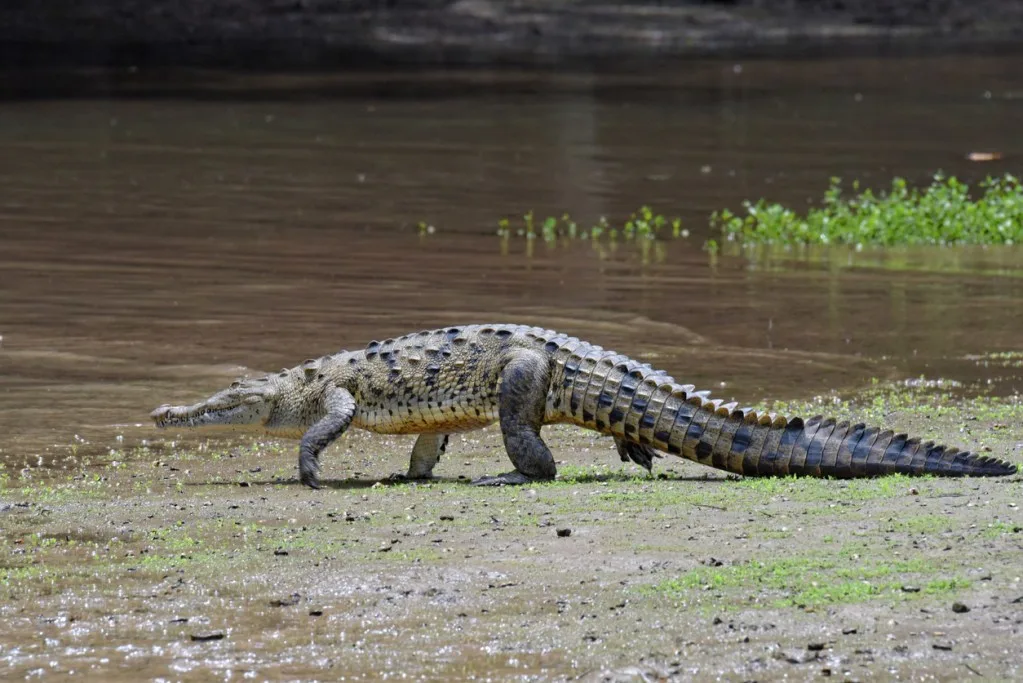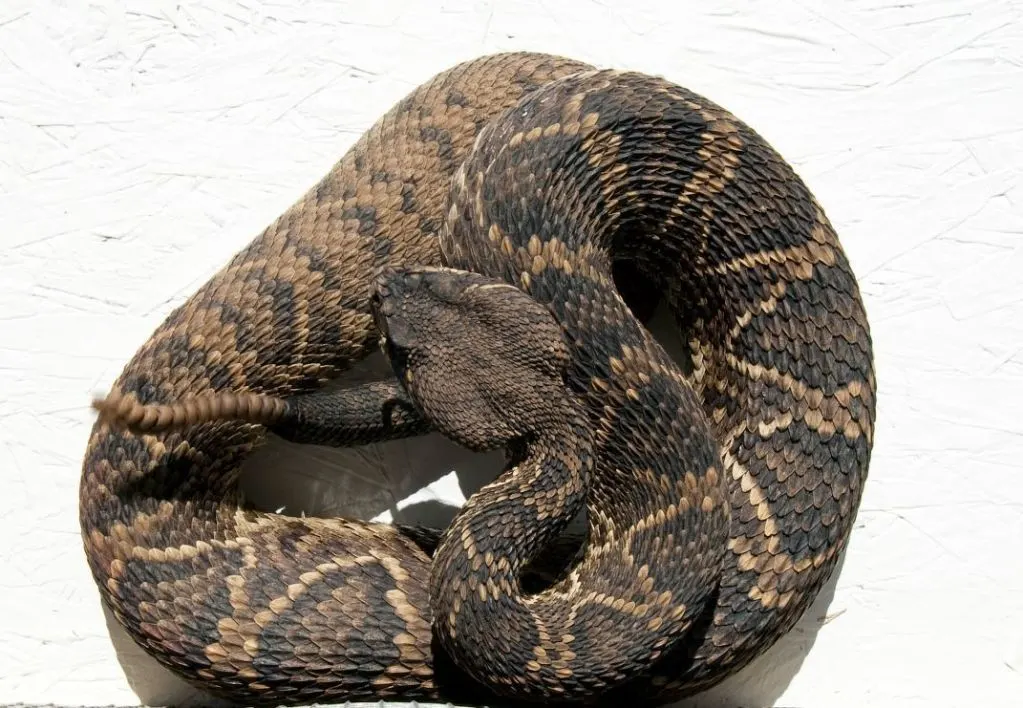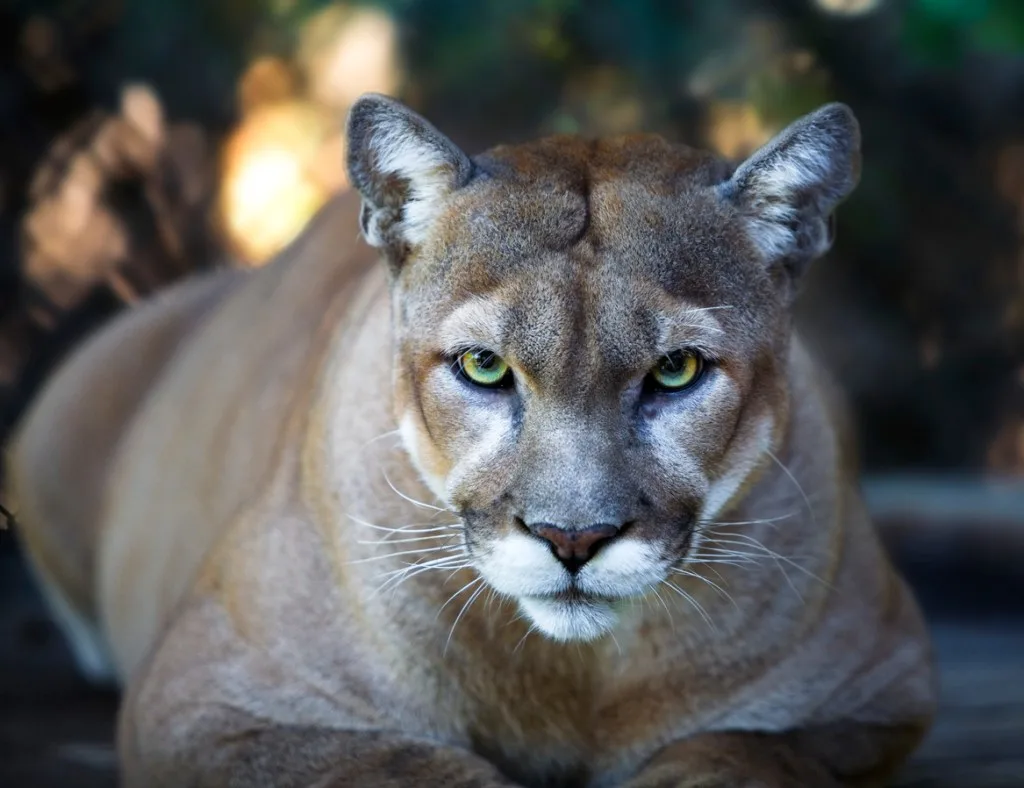Have you ever wondered about the dangerous creatures in Florida? Millions of people visit the Sunshine State yearly, and they don’t seem too concerned about the animals that call this tropical state home. However, maybe you should be concerned.
There are a few familiar creatures in Florida besides your typical gators and sharks.
While some may think that humans are the most dangerous creatures, they didn’t make our top ten list of the most dangerous animals in Florida.
Read on to see what made our list!

Are Deadly Animal Attacks Common In Florida?
Florida, like any other tourist-driven state, has its share of newsworthy events. But unlike Montana or Alaska, for example, deadly animal attacks are somewhat rare. But they happen, and one of the most common animal attacks in Florida is from sharks. With around 25 shark attacks annually, Florida is the highest-ranked state regarding shark attacks.
However, with over 100 million visitors yearly, 25 non-fatal shark attacks rank pretty low on a danger radar.
Animal attacks can happen anywhere, even in Florida. Continue reading about Florida’s ten most dangerous creatures, and you’ll see that deadly animal attacks in the Sunshine State aren’t as common as you might think. Let’s get started!
10 Most Dangerous Creatures In Florida
While animal attacks can happen in Florida, if you are aware of the deadly animals, you might be able to avoid an attack. Some of the creatures we list below are more innocent than others, but if you avoid them, it likely won’t be your story in the newspaper headlines.
While we all might think that the most common deadly animal attacks are from gators and sharks, we must not forget the hazards of some of the littlest creatures. Here are ten of the most dangerous creatures in Florida.
#1 Alligators
Alligators are an ordinary sight in Florida, where estimates are that the alligator population is about 1.3 million. You can find these giant reptiles in all 67 Florida counties, and they inhabit freshwater lakes, marshes, and swamps.
Although alligators are generally shy and reclusive creatures, officials have documented numerous alligator attacks in Florida over the years. The Florida Fish and Wildlife Conservation Commission (FWC) reports that between 1971 and 1986, there were around six alligator bites per year. Between 1987 and 2017, that number increased to an average of ten per year.
Although rare, fatalities from alligator attacks can happen. Since 1948 there have only been 25 recorded fatalities. In most cases, you can avoid alligator attacks by taking precautions like staying away from areas where alligators live and avoiding swimming in waters where alligators may be present.

#2 Box Jellyfish
Box jellyfish, also bearing the name sea wasps, can be pretty deadly. They’re particularly hazardous if you’re allergic to their sting. Even if you’re not allergic, a box jellyfish sting can be painful and cause difficulty breathing, abdominal cramps, muscle spasms, shock, and even death.
There are no reports of deaths from a box jellyfish sting in Florida, but that doesn’t mean you should take them lightly. Avoiding them is the best way to stay safe.
To steer clear of them, you’ll need to know what to look for. Searching for a box jellyfish can be challenging because they are transparent, but they can grow up to 10 feet long. With warmer ocean temperatures possibly leading to an increase in most jellyfish populations, be diligent. Keep your eyes peeled the next time you’re at the beach.
#3 Black Widow Spider
The black widow is one of the most feared spiders in North America. It has dangerously sharp fangs, and the females have the characteristic glossy black body and red hourglass-shaped underbelly.
Most bites occur from female spiders, and though painful, they are not fatal. The toxins from a bite can cause excruciating pain, weakness, hypertension, and muscle cramps. They prefer the outdoors to the indoors and reside primarily in temperate forests and woodlands.
However, don’t let them stop you from taking a hike; you’re more likely to sprain an ankle than suffer a bite from a black widow.
#4 American Crocodile
Compared to Florida’s gator, the American Crocodile is a gray-green color, while the gator is black. The snout is a bit different as well. The crocodile’s snout is V-shaped, while the gator is more rounded. While the crocodile has more of an aggressive reputation than the gator, there are also fewer crocs than gators in Florida.
The American crocodile resides in southern Florida’s coastal regions in brackish and saltwater ponds and swamps. While more aggressive than alligators, officials have documented only a few fatalities resulting from American crocodiles compared to the 25 deaths from the gator.
Regardless of which you may come across, these are not docile creatures and may attack if you provoke them.

#5 Great White Shark
The great white shark is a truly formidable creature. Their distinctive white underbellies and gray upper bodies make them instantly recognizable, and their starring role in the world-renowned movie Jaws has only increased their reputation as man-eaters. In reality, great whites are relatively shy creatures that rarely attack humans.
However, they have a formidable set of teeth, with 300 serrated teeth behind their primary ones. They hunt for seals and sea lions near coastlines worldwide.
While great white shark bites can happen and be fatal, most are testing bites. This helps the shark determine what kind of creature it has encountered. Contrary to popular belief, great whites don’t like human flesh, as it’s too bony and not fatty enough. On average, Florida sees around 20-30 shark attacks yearly, and none of those attacks have been fatal in recent years. Florida may top the charts for shark bites, but that’s primarily due to the high number of visitors to the state. So don’t let the fear of a shark attack keep you from enjoying a sunny day at the beach.
#6 Eastern Diamondback Rattlesnake
The Eastern diamondback rattlesnake is the most immense, and you can find them in the southeastern states. It typically resides in dry forests, sandhills, and hammocks near the coast and marshes.
Eastern diamondbacks can get up to 34 pounds and be as long as eight feet. You can identify one by a pattern of brown or black diamond edges with cream-colored scales and an indentation on top of its head. In the U.S., people report around 7,000 – 8,000 snake bites yearly, with only five of those bites resulting in death.
In the last decade or so, officials have reported only three deaths, with one of them possibly from the eastern diamondback rattlesnake. If you see any snake, it’s best to give it a wide berth and leave it alone.

#7 Bull Shark
As anyone who’s ever seen Jaws knows, sharks are some of the most feared creatures in the world. But of all the shark species that call Florida home, the bull shark is most often to blame for attacks on humans. That’s because you can commonly find bull sharks in shallow waters, where people like to swim.
According to an article in Florida Today, 50 percent of all unprovoked shark attacks in the United States over the last few years have occurred in Florida. Bull sharks aren’t just a problem in the United States; they’re responsible for a quarter of all shark attacks worldwide. So if you need a creature to label the most dangerous animal in Florida, the bull shark might be your best bet.
#8 Florida Black Bear
If you’re lucky enough to spot one of Florida’s estimated 4,000 black bears during your travels, take some precautions. Although there have been no records of attacks on humans by Florida black bears, they are still wild animals and can be dangerous if they feel threatened.
Florida black bears typically weigh around 300 pounds.
You can find them in scrublands and forested wetlands. If you encounter one, make yourself as big and loud as possible and back away slowly. Don’t run! By following these simple tips, you can ensure a safe and enjoyable encounter with Florida’s largest land mammal.
#9 Kissing Bug
The kissing bug gets its name because it often bites its prey near the mouth and eyes. They don’t honestly kiss. This Florida insect has brown or black wings, often with an edge of reddish-orange color, and is in many southern states. They measure roughly the size of a small coin but can pack a punch with their toxins when they bite.
They like hiding places and can be almost anywhere in Florida, including in animal dens and under leaves, wood, and porches.
While these insects prefer the face, they can and will bite anywhere, leaving half a dozen or so tiny red marks. When they do, you’ll feel an itch similar to other bug bites or skin irritations. Most times, they are harmless unless you have an allergic reaction, and then you may notice increased red, swollen, and itchy skin. Some carry a parasite that causes Chagas Disease, an inflammatory disease that can impact humans and dogs. However, most are just annoying.
#10 Florida Panther
Florida’s state animal is the Florida panther, and there are only around 130 of them in the wild. So, your best bet of seeing a Florida panther will be on a wilderness preserve rather than in the wild. The only place to find them in their natural habitat is at the southwestern tip of Florida in swamps, wetlands, and upland forests.
Due to their endangered status and limited numbers, humans are probably more dangerous to them than they are to us. Nevertheless, it would be an incredible experience to see one of these beautiful animals in the wild.

What to Do If You See a Dangerous Wild Animal in Florida
Do not run, especially if you come across the Florida Black Bear or panther. If that’s the case, back away slowly. These large land mammals are more afraid of you than you are of them. As for the little creatures like black widows and kissing bugs, leave them alone and don’t go digging under porches or wood piles.
Regarding those pesky reptiles, if you can back away slowly, do so. But if an alligator or crocodile starts to chase you, run. If they catch you, fight with everything you have. If you glimpse a rattlesnake or hear it before seeing it, stay calm and back away. Any sudden movements could cause it to strike.
Visiting Florida usually means you’ll also be playing in the water. If you see a jellyfish, steer clear. Get out of the water if you need to. As for sharks, the same principle applies. Ensure it knows you’re watching it and back slowly toward the shore without any erratic splashing movements.
The critical thing to remember when seeing any animal in the wild is to remain calm. Animals are curious. If you start acting up, they might do the same. That is where the problems start. Remember, having your story on the news usually means things did not go well for you.
Watch Out for Florida’s Deadliest Creatures
As we stated earlier, humans did not make the list of Florida’s deadliest creatures. All joking aside, many of the creatures above aren’t reasons not to enjoy Florida’s beaches. However, they are reason enough to be aware of wild animals.
Many of us are enchanted by wildlife sightings. Sometimes we forget these animals, from the tiniest kissing bugs to the most immense sharks, are wild and unpredictable. So, just like we try to keep nature clean and tidy, we must also respect the wildlife in nature. Knowing these animals are out there, we can do our best to avoid them instead of seeking them out.
Have you encountered any of the animals on our list?
Discover the Best Free Camping Across the USA
To be honest with you, we hate paying for camping. There are so many free campsites in America (with complete privacy).
You should give it a try!
As a matter of fact, these free campsites are yours. Every time you pay federal taxes, you’re contributing to these lands.
Become a FREE CAMPING INSIDER and join the 100,000 campers who love to score the best site!
We’ll send you the 50 Best Free Campsites in the USA (one per state). Access the list by submitting your email below: